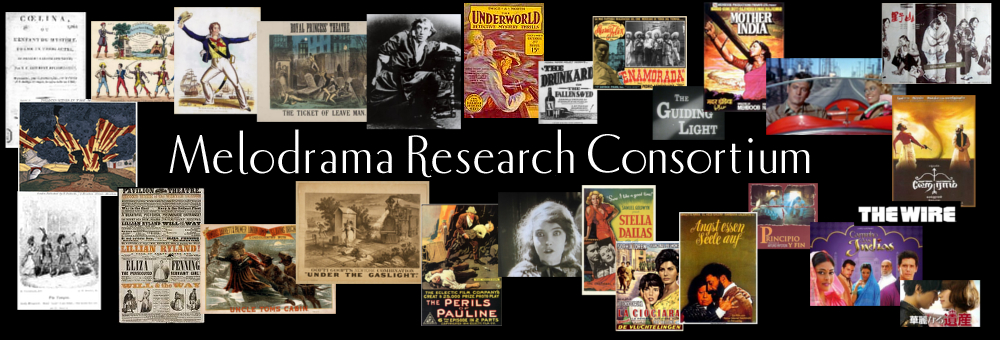The melodrama of Ozu: Tokyo Story and its time
by: Daisuke Miyao
in Journal of Japanese and Korean Cinema
ABSTRACT
The Japanese filmmaker Ozu Yasujirō openly expressed his disgust for melodrama in a December 1952 interview. And yet, curiously, he said Tokyo Story (Tokyo monogatari), which was released only a year later, had ‘the strongest melodramatic tendency’ among his films. Ozu never said he disliked his acclaimed 1953 film. How should we interpret this contradiction? In this essay, I take Ozu’s conflicting claims as indicative of the complexity of the discourse of melodrama in Japan. I locate Tokyo Story in two contexts: the context of Euro-American studies of film melodrama and that of the discourse on melodrama in Japanese film criticism. The first context reveals that Tokyo Story cannot be comfortably categorized as a melodrama, though the film shares elements of the melodramatic imagination. The second context demonstrates that Tokyo Story is not a simple melodrama. Ozu’s contradiction stemmed from an ambivalent definition of melodrama in Japan in the first half of the twentieth century. By closely analyzing Ozu’s Tokyo Story, and how melodrama was imagined and constructed between the 1930s and the 1950s, we can gain a stronger understanding of the film’s relation to the mode.
Melodrama and Visibility
by Juan Sebastián Ospina León
About this book
Struggles for Recognition traces the emergence of melodrama in Latin American silent film and silent film culture. In this deeply archival investigation, Juan Sebastián Ospina León examines how melodrama visualized and shaped the social arena of urban modernity in early twentieth-century Latin America. Analyzing sociocultural contexts through film, this book demonstrates the ways in which melodrama was mobilized for both liberal and illiberal ends, revealing or concealing social inequities from Buenos Aires to Bogotá to Los Angeles. Ospina León critically engages Euro-American and Latin American scholarship seldom put into dialogue, offering an innovative theorization of melodrama relevant to scholars working within and across different national contexts.
On ‘Not Being Nothing’: Post-ironic Melodrama in James Gray’s “The Immigrant”
by Simone Francescato
in: Iperstroria: Journal of American and English Studies
Abstract
This essay analyzes James Gray’s The Immigrant (2013) discussing it as an instance of post-ironic melodrama (Włodek 2017) aimed at recovering the purity shown by this genre in the early phases of cinematic history. The essay argues that, although the movie pays evident homage to pre-classic silent-era melodramas, it also destabilizes the genre’s conventions by resorting to a particular use of the mise-en-scène and characterization. This directorial choice allows the film to retain pathos without eschewing ambivalence and indeterminacy, finally contributing to produce a complex representation of immigrants’ experience as well as a rather bleak portrait of the American Dream.
Excavating French Melodrama of the First Empire
by Katherine Astbury, Sarah Burdett, Diane Tisdall
in: Sound Stage Screen, Vol. 1, Issue 1
French melodrama of the Napoleonic era was a form of total theater with text, music, and gesture inextricably linked in the creation of effect for the post-Revolutionary audience. Theater scholarship in France has long been dominated by textual analysis and, as a result, the interconnections between these elements of melodrama performance have been underexplored, although attempts “to ‘sonorize’ the study of melodrama” are becoming more widespread. Even the groundbreaking volumes of René-Charles Guilbert de Pixerécourt’s theater being produced currently perpetuate the subservience of music to text in that the play texts receive full critical apparatus whereas the scores do not.
Uneasy Lies the Head that Wears the Crown: Narcoqueens, Beauty Queens, and Melodrama in Narconarratives
by Maria Luisa Ruiz
in: The Middle Atlantic Council of Latin American Studies Vol. 5, No. 1
The melodramatic narrative mode creates complex realities and news events as logical and consumable stories. This article considers the ways that popular media portray the cases of Sandra Avila Beltrán and Laura Zúñiga, both arrested on drug-related charges in separate incidents that overlap with narconarratives. My analysis demonstrates that Avila Beltrán’s and Zúñiga’s life stories intrigued audiences, because, in the context of melodramas, woman as criminals is an attractive trope that counters expected “feminine” behavior and challenges constructions of national ideals and respectable femininity.
Reimagining Melodrama in The Old Curiosity Shop
by: James Armstrong
in: Dickens Quarterly Vol. 38, No. 1
Abstract:
This article considers how The Old Curiosity Shop constantly borrows from and reinvents the conventions of stage melodramas popular in the early decades of the nineteenth century. Rather than simply imitating the melodramas of the stage, the novel reworks them for its own purposes, transforming stage melodrama into something much more complex in terms of linguistics, scenography, and character. Focusing on melodramas by Douglas Jerrold, Henry William Grosette, and John Baldwin Buckstone, the article explores how Dickens freely borrowed from stage melodramas popular at the time he was writing The Old Curiosity Shop, but gives them new life by complicating and sometimes even subverting their conventions.

